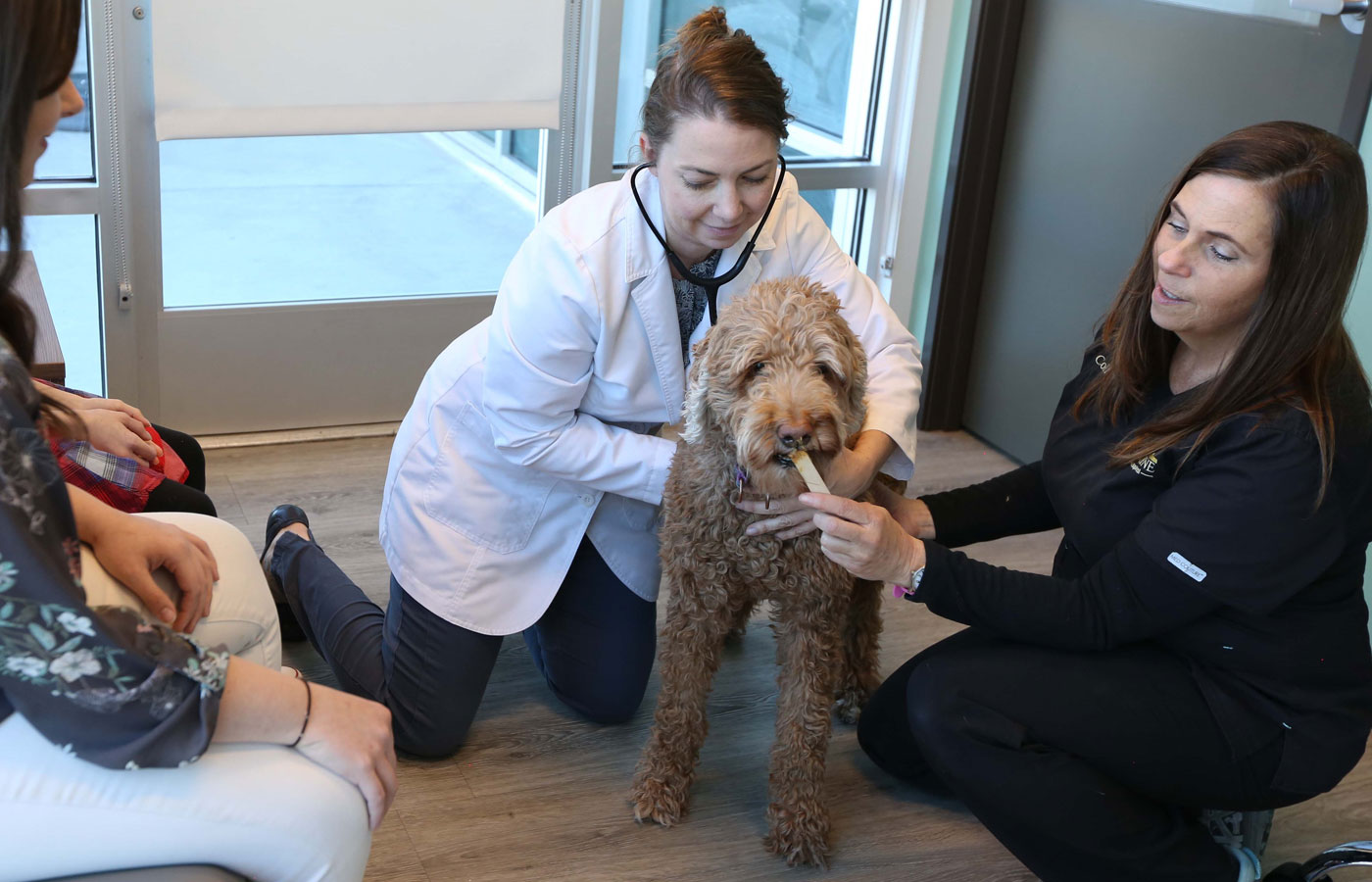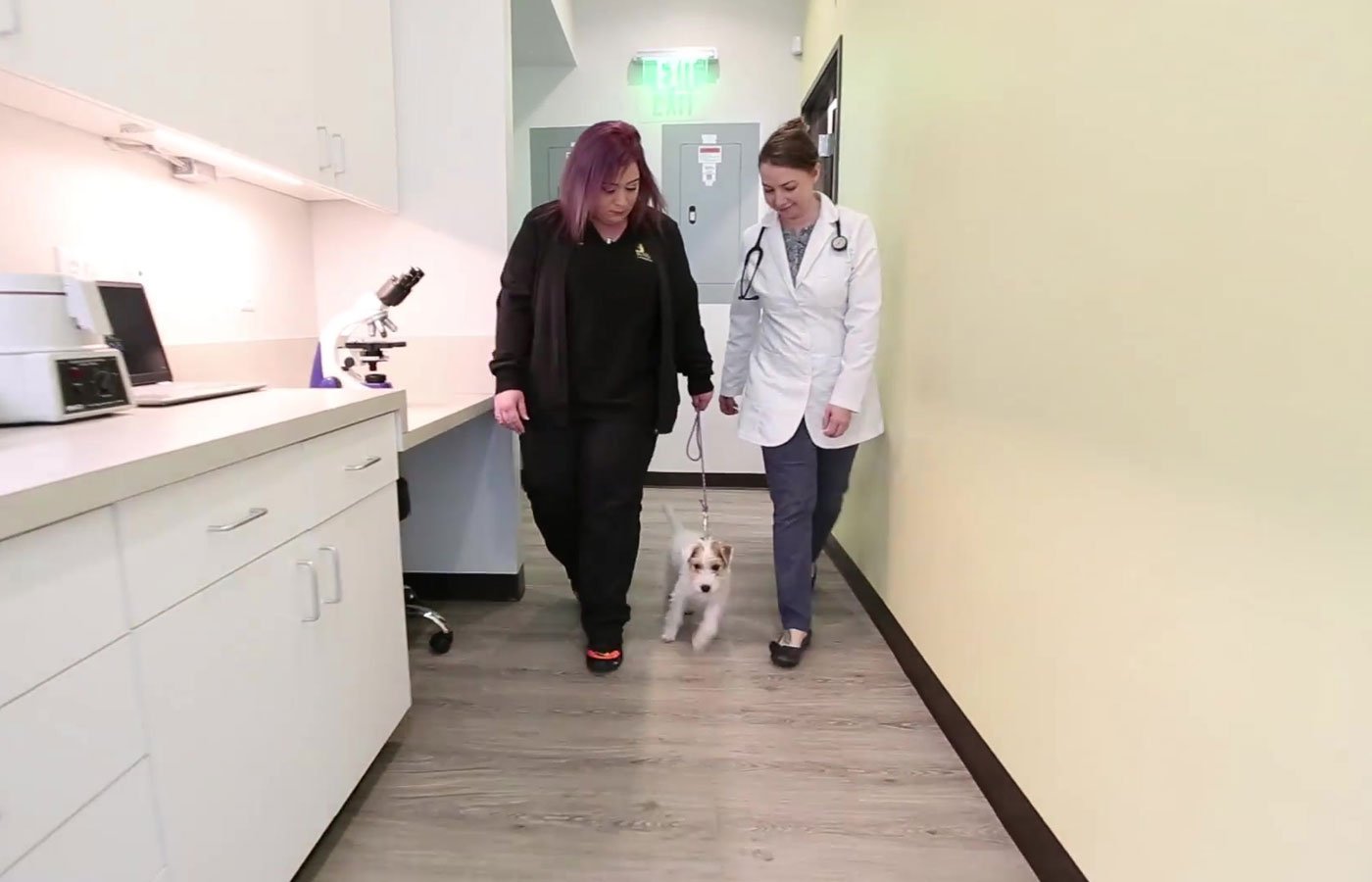Annual Exams

Proper preventative care starts with an annual wellness exam and proper vaccination of your pet. This is the time to come in for puppy or kitten shots! In addition, during your pet’s annual wellness exam you will
receive the following evaluation:
Read More
- Head to toe exam: Eyes, ears, skin, joints, heart and lung health, teeth/oral health, and weight/body condition will be evaluated.
- Discussion and recommendations for proper nutrition.
- Baseline bloodwork: Helps to identify issues such as thyroid problems, diabetes, urinary tract infections, kidney disease, liver disease, and some cancers.
- Vaccinations according to the recommended vaccine schedule and based on your pets risks and lifestyle.
- Parasite prevention: Fleas, ticks, intestinal parasites.
Read More
Microchipping

You leave your front door open accidentally while bringing in the groceries. A neighbor retrieves a ball from your yard and accidentally leaves the gate open. As a result, your dog or cat is now nowhere to be found.
A microchip is an easy way to virtually guarantee the identity of a lost pet. A microchip is a small electronic device placed in a specific location under the skin of your pet. The chip can then be read by anyone with a chip reader. A veterinarian, shelter, or rescue can then identify your lost pet and contact you right away.
Read More
Read More
Weight Management

Weight management for your pet is important. It can play a significant role in determining its lifespan. For example, a study in 2002 by Purina determined that dogs with owner controlled diets
lived over 2 years longer without needing treatment for a chronic condition. For a pet with at 13 year lifespan, this equates to over 15% of its life!
During an exam, our staff will discuss with you recommendations for weight management of your pet. For supporting information, please see the AVMA Pet Weight Recommendations.
Read More
During an exam, our staff will discuss with you recommendations for weight management of your pet. For supporting information, please see the AVMA Pet Weight Recommendations.
Read More
Spay And Neutering

Spaying or neutering your pet is a complex topic, and is an important area for discussion with our staff. This procedure offers a number of benefits, some of which are highlighted below:
Spaying a female: Reduces the risk of mammary cancers, and eliminates the risk of uterine infection which is a common problem and can be life threatening. Spaying also decreases behavioral issues, prevents pregnancy and pet overpopulation.
Neutering a male: Improves prostate health and reduces behavioral issues such as marking, aggression, and roaming in search of females.
Proper timing for when a pet should be spayed or neutered is an important consideration. The decision of when to perform the procedure depends on a variety of factors including gender, breed size, certain behaviors, and owner preferences.
Read More
Spaying a female: Reduces the risk of mammary cancers, and eliminates the risk of uterine infection which is a common problem and can be life threatening. Spaying also decreases behavioral issues, prevents pregnancy and pet overpopulation.
Neutering a male: Improves prostate health and reduces behavioral issues such as marking, aggression, and roaming in search of females.
Proper timing for when a pet should be spayed or neutered is an important consideration. The decision of when to perform the procedure depends on a variety of factors including gender, breed size, certain behaviors, and owner preferences.
Read More


